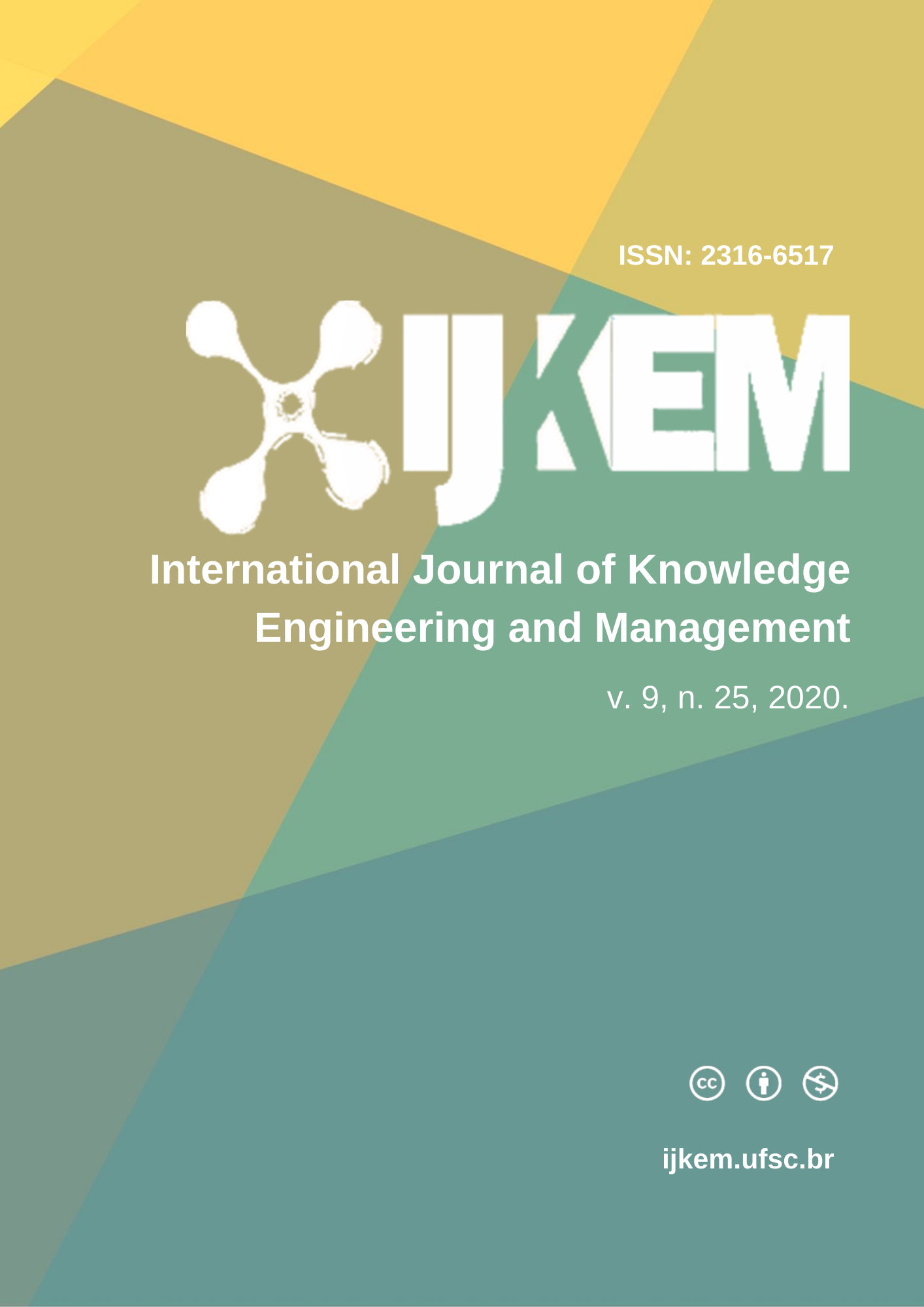REVISÃO DE FORMA SISTEMÁTICA DO DESIGN THINKING APLICADO EM DISPOSITIVOS MÉDICOS
Conteúdo do artigo principal
Resumo
Objetivo: Analisar estudos baseados na aplicação do Design Thinking envolvendo dispositivos médicos para discutir a importância das necessidades dos usuários na resolução de problemas relacionados às tecnologias em saúde.
Design?Metodologia?Abordagem: Neste artigo é apresentada uma revisão de forma sistemática da literatura, através do método Systematic Search Flow (SSF), por meio de uma pesquisa nas bases de dados Scopus, IEEE, Pubmed e Scielo. Foram encontradas 161 publicações segundo os critérios de busca e as palavras-chaves definidas. Por fim, foram selecionados seis artigos para a análise dos resultados.
Resultados: Os resultados da revisão de forma sistemática mostraram diversas possibilidades de aplicação do Design Thinking no desenvolvimento de dispositivos médicos, desde em dispositivos de classe de risco mais elevado, até mesmo em equipamentos menos complexos, para uso domiciliar, e software para aporte clínico para melhorar a experiência de recém-nascidos, crianças, quanto também para auxiliar o envelhecimento saudável de idosos.
Originalidade?Valor: O desenvolvimento de novas soluções tecnológicas centradas nos usuários e voltadas para a saúde permitem a aplicação do Design Thinking; especialmente aquelas que envolvem dispositivos médicos para melhorar a segurança e a qualidade das tecnologias de saúde para os usuários, proporcionando melhor usabilidade e compreensão do contexto atual dessas tecnologias na perspectiva dos usuários.
Referências
Abookire, S., Plover, C., Frasso, R., & Ku, B. (2020). Health Design Thinking: An Innovative Approach in Public Health to Defining Problems and Finding Solutions. Front Public Health, 8(459). https://www.ncbi.nlm.nih.gov/pmc/articles/PMC7484480/
Altman, M., Huang, T. T., & Breland, J. Y. (2018). Design Thinking in Health Care. Prev Chronic Dis.
Ayah, R., Ong'ech, J., Mbugua, E. M., Kosgei, R. C., Waller, K., & Gathara, D. (2020). Responding to maternal, neonatal and child health equipment needs in Kenya: a model for an innovation ecosystem leveraging on collaborations and partnerships. BMJ Innov, 6. https://doi.org/10.1136/bmjinnov-2019-000391
Brown, T. (2008). Design Thinking. Harvard Business Review.
Brown, T. (2010). Design Thinking - Uma metodologia poderosa para decretar o fim das velhas ideias (Traduzida - 2017 ed.). Starlin Alta.
Ferenhof, H. A., & Fernandes, R. F. (2016). Desmistificando a revisão de literatura como base para redação científica: método SFF. Revista ACB, 21(3). https://revista.acbsc.org.br/racb/article/view/1194
Flewwelling, C., Easty, A., Vicente, K., & Cafazzo, J. (2014). The use of fault reporting of medical equipment to identify latent design flaws. J Biomed Inform.
Jiang, J., Liu, T., Zhang, Y., Song, Y., Zhou, M., Zheng, X., & Yan, Z. (2017). Design and development of an intelligent nursing bed - a pilot project of "joint assignment". Annu Int Conf IEEE Eng Med Biol Soc, 38–41. https://doi.org/10.1109/EMBC.2017.8036757
Marko-Holguin, M., Cordel, S. L., Voorhees, B., Fogel, J., Sykes, E., Fitzgibbon, M., & Glassgow, A. (2019). A Two-Way Interactive Text Messaging Application for Low-Income Patients with Chronic Medical Conditions: Design-Thinking Development Approach. JMIR Mhealth Uhealth, 7. https://www.ncbi.nlm.nih.gov/pmc/articles/PMC6658312/
Organização Mundial da Saúde. (2020). Dispositivo Médico - Definição Completa. Organização Mundial da Saúde. https://www.who.int/medical_devices/full_deffinition/en/
Poncette, A.-S., Spies, C., Mosch, L., Schieler, M., Weber-Carstens, S., Krampe, H., & Balzer, F. (2019). Clinical Requirements of Future Patient Monitoring in the Intensive Care Unit: Qualitative Study. JMIR Med Inform, 7. https://doi.org/10.2196/13064
Rodziewicz, T. L., Houseman, B., & Hipskind, J. E. (2020). Medical Error Prevention. StatPearls. https://www.ncbi.nlm.nih.gov/books/NBK499956/
Shepherd, M. (2004). Clinical Engineering Handbook (1st ed.). Elsevier Academic.
Sherman, J., Lee, H. C., Weiss, M. E., & Kristensen-Cabrera, A. (2018). Medical Device Design Education: Identifying Problems Through Observation and Hands-On Training. Des Technol Educ, 23, 154-174. https://www.ncbi.nlm.nih.gov/pmc/articles/PMC6759072/
Tosi, F., & Rinaldi, A. (2017). Design and Usability of the Next Medical Devices for the Home Care. The Design Journal. https://doi.org/10.1080/14606925.2017.1352722
Van der Cammen, T. J., Albayrak, A., Voûte, E., & Molenbroek, J. F. (2016). New horizons in design for autonomous ageing. Oxford Academic, 46, 11-17. https://doi.org/10.1093/ageing/afw181
Detalhes do artigo

Este trabalho está licenciado sob uma licença Creative Commons Attribution-NonCommercial 4.0 International License.
Esta licença permite que outros remixem, adaptem e criem a partir do seu trabalho para fins não comerciais, e embora os novos trabalhos tenham de lhe atribuir o devido crédito e não possam ser usados para fins comerciais, os usuários não têm de licenciar esses trabalhos derivados sob os mesmos termos.

